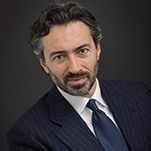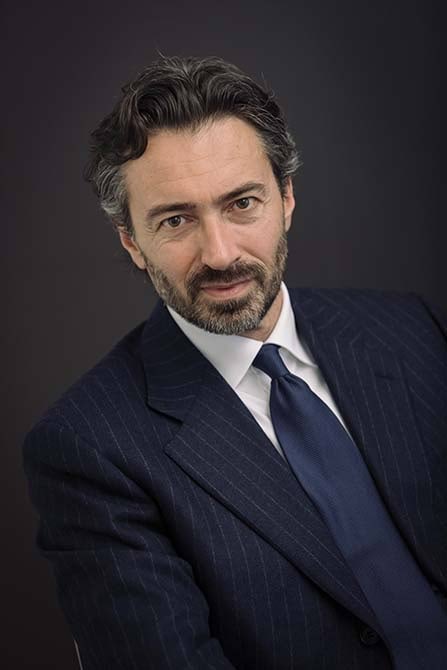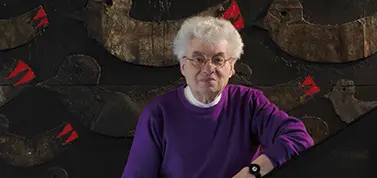Public-private partnerships to be replicated in other cities
Manfredi Catella tells us about the ambitious real-estate plans for the city: Porta Nuova, Porta Volta and the projects for the future.
Manfredi Catella tells us about the ambitious real-estate plans for the city: Porta Nuova, Porta Volta and the projects for the future.
After studying Economics at the Università Cattolica of Milan and Real-Estate Planning at the Polytechnic University of Turin, followed by specialising at the London Business School, Manfredi Catella started working in the international finance sector. Today he is one of the most important players in the world of real-estate, a sector in which with Coima SGR – a real-estate investment, development and portfolio management platform – he developed the Porta Nuova and Porta Volta projects in Milan.
Winner at the Mipim Awards in the “Best Urban Regeneration Proj-ect” category for the Porta Nuova project and in the “Best Office & Business Development” category for the Feltrinelli Pyramid by Herzog at Porta Volta. Do you consider yourself satisfied?
II would like to start by saying that I consider the awards we received a form of recognition for the entire team. The awards we won recently – and I’m referring to the Mipim Awards – gave us a lot of pleasure for two reasons: they give our work resonance at an international level and, as a consequence, our reputation too. And because, until now, no Italian company has ever received double recognition such as this one. These awards are for an entire sector that also excels at an international level and it has never happened before. So yes, I am satisfied. As we all know too well, however, these awards are just part of a journey and we are already thinking about our new projects. In fact, the awards are the conclusion to a process: Porta Nuova and Feltrinelli Porta Volta are behind us now and we are already looking to the future.
For international investors, this double victory represents a further attraction for the city of Milan. Have you noticed a growing amount of interest in the real-estate developments you have in your programme?
This is something we will see in the future. Both international and domestic investors can certainly rely on the fact that, over the last 15 years, the projects implemented in Milan are a solid indicator of the quality of the territory, projects which have also been well received by the inhabitants of the city. These are long-term projects with buildings that have been in the pipeline for years and only now are seeing the light of day. In our line of work, you only see the fruit of your labours after many months, or even years. What is more, Milan represents a political model that has never been put into practice before in Italy and, if we take the Porta Nuova project and use this as an indicator, it had to pass through five different administrations; two led by Gabriele Albertini, one led by Letizia Moratti, one led by Giuliano Pisapia and the one currently headed by Giuseppe Sala, under whose administration the new park at Porta Nuova will shortly be inaugurated. Each successive local administration has had the ability to inherit the work left by their predecessors and carry it forward, right up to actually seeing it completed. Milan has shown how, with political continuity and a long-term vision, projects can be launched and they can also be completed.
The Porta Nuova skyscrapers district is something new for Italy. Do you think this model could be replicated in other cities, such as Rome, or will it remain a one-off?
I believe that Porta Nuova has had a very important cultural function, which is to have reintroduced to our country a commissioning process and work method that considers real-estate, not just as a profit-driven investment opportunity, but rather an investment in the local territory that will have a social and economic impact on a much larger part of the community than just those behind the initiative. This has progressively led to a regeneration of the relationship between the public and private sectors, which has been acknowledged at an international level through these awards.
So, rather than an architectural and urban redevelopment project, we could maybe focus more on the work method. Porta Nuova is undoubtedly concrete proof of this rather than just a coincidence and, given the success it has had, it could and must be replicated in other cities.
I am convinced that the way to replicate this success does not depend on architecture or the actual buildings, but on the method: the “ingredients” may be different for every city, but not the method.
You will be remembered as the person who revolutionised the Milan skyline. What is the most rewarding acknowledgement you have received?
To go through Piazza Gae Aulenti and see passers-by taking photos of the surrounding buildings. It is a habit that had been lost in Italy; we only took photos of our ancient history. The fact that people are starting to appreciate a more contemporary image or architectural expression of the city again is a very simple reward, but maybe the most important prize.
The new green lung at Porta Nuova, the Library of Trees, will be inaugurated shortly. A central element for the development of the area and a new park open to the public. Is its definition as a “garden quarter” correct?
To be honest I had never heard it before, but I really like it! An important theme for us, and one that we are very sensitive about and which we always design methodically and with great care when we work on the territory, is precisely the idea of public spaces. Leaving aside their actual definitions, what we have tried to do is to lay a kind of “carpet” over the infrastructures that complete the area, such as the metropolitan railway, changing the city plan and turning it into a pedestrianised area. We then worked on the quality of the public spaces by looking at the road surfaces, the lighting and urban furniture and features, and obviously the green areas, so as to create a kind of fabric that that binds the areas together. We consider this to be a real innovation that goes beyond the mere architecture – that may be liked or not liked – and in a certain way it also makes simpler to design and create public spaces, especially if you can count on a good architect.
Do you think we are now more sensitive to green areas as a part of contemporary urban development, at least as far as new spa-ces open to the general public are concerned?
I believe we are. The nature of public spaces, and of the Library of Trees in particular, is the creation of green areas that do not have the “natural” look of the countryside. They are rather more usable, safer, illuminated, more liveable and designed to hold events and shows. To put it simply, a green communal area.
Cesar Pelli has been entrusted with the redevelopment of the former Inps tower, an historic business centre in Milan. What will it become in your projects? What will remain of the old Milan of the 1960’s?
We demolished the tower because it was an inefficient building, in terms of both the height of the storeys and the layout inside the building. So really it was a highly technical decision, which was also influenced by the current market demand for specific types of spaces. The project will meet these new requirements and will be integrated with more attention on environmental sustainability.
The benchmark will not be Porta Nuova; for this project, we are raising the bar. The other factor we are integrating into the design of the Gioia 22 tower, a new approach compared with the buildings we have previously constructed, is technology. The infrastructure-technological “web” of analysis and data collection sensors that characterises it will be a prerequisite to improving the building.
Work on the 7 Milan rail hubs has been suspended, but surely these urban areas are strategic. Do you think you will also invest in these in the future?
As far as Coima sgr is concerned we are obviously very interested in this project. These hubs are an important opportunity because they are central and account for a considerable amount of land. They certainly have an important function in the mosaic that will define the Milan of the future.
For the moment, I can say that Coima sgr will be looking at them with interest.
The final question is more personal: do you enjoy living in Milan?
Yes. As a family, we could have chosen to live in any city and we chose to live precisely here, in Milan, because we are convinced that the quality of life in Italian cities in general, and in this city in particular, is very high and here we can find innovation and internationalism.
In our opinion, urban densification, which seems to be proclaimed constantly as an almost absolute rule, is not true. You can only densify a territory up to a certain point. If you go too far a city can become a complex megalopolis with enormous traffic and security problems. Personally, I don’t believe that is the model of a city any of us aspire to.















